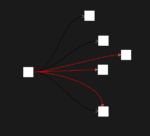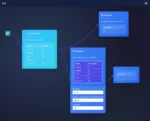
by tyler garrett | Jun 12, 2025 | Data Processing
Imagine watching a symphony perform without a conductor—each musician intuitively knowing precisely when to begin playing and seamlessly harmonizing their contribution with the group. Now, picture the same orchestra, this time guided meticulously by a conductor who commands every movement, ensuring perfect synchronization and coordination. Within the complex realm of data and technology infrastructure, businesses face a similar choice when deciding how their software components communicate and collaborate. How you architect your workflow—whether through choreography or orchestration—can profoundly impact your system’s scalability, reliability, and maintainability. Let’s explore these two powerful paradigms, unravel their differences, and understand which approach will best harmonize your enterprise’s data and systems for innovative outcomes.
Defining Choreography and Orchestration in Workflow Management
Before we dive into their intricacies, let’s clearly define our terms. Orchestration refers to a centralized approach where a single controller (often referred to as an orchestrator) dictates the execution, flow, and control of enterprise workflows. It’s a top-down strategy, similar to how a conductor meticulously guides each section of an orchestra. Each task or microservice plays its designated role only when explicitly triggered or instructed by the central orchestrator. This method provides clarity, cohesion, and a straightforward system to visually manage complex business processes and integrations.
Choreography, on the other hand, is a decentralized approach where each individual service or system knows what to do and when, based purely on event-driven messages or data state changes. In other words, the control logic is distributed across multiple services, with each autonomous component reacting intuitively and intelligently to incoming events. This strategy mirrors a group of skilled dancers performing without explicit commands, each dancer observing subtle signals to maintain synchronization and harmony. Choreography generally supports greater autonomy and flexibility, potentially making your organization’s workflow more adaptable to evolving requirements and allowing systems to scale more naturally.
Advantages of Choosing Orchestration
Orchestration often appeals strongly to organizations favoring control, visibility, and structured process management. Its centralized nature offers several compelling advantages. Because orchestrators provide a detailed view of workflow execution status, troubleshooting and error-handling become straightforward—your team can rapidly pinpoint bottlenecks or failures and respond decisively. When implemented correctly, orchestration creates clarity by explicitly defining how data is processed and validated step-by-step. By leveraging structured execution control, your teams can establish advanced multi-stage data validation, ensuring that all inputs and transformations meet strict data quality standards from ingestion through consumption.
Moreover, orchestration provides outstanding predictability and consistency. Since tasks are triggered by explicit instructions from the central controller, teams have clear documentation and visibility, promoting easier debug and greater confidence in complex workflows. Utilizing orchestration can also significantly simplify capturing data provenance in transformation workflows, giving you a detailed lineage for auditing purposes, regulatory compliance, and easier troubleshooting. This level of controllability often makes orchestration appealing to industries—such as financial services or healthcare—where accuracy and traceability of data are critical to operations.
Ultimately, businesses that require high-level oversight of intricate business logics, rules, and transactions generally benefit most from orchestration frameworks, particularly when aiming for transparency, compliance, and maintainability over decentralized patterns.
Benefits of Workflow Choreography
While orchestration offers structured control, choreography provides significant agility advantages, particularly compelling as workflows evolve more organically or scale dynamically. Choreographed architectures, by nature, promote loosely coupled systems, allowing each service the freedom to independently handle data processing and make responsive decisions based on its understanding of events. This reduces the need for tightly managed coordination and can create systems capable of greater resilience and self-healing capacity. For instance, implementing choreography alongside self-healing data pipelines with circuit breaker patterns allows your services to gracefully degrade during component failures and automatically recover, increasing uptime and resilience.
Choreography favors adaptability, making it particularly suitable for modern, distributed event-driven architectures. For organizations embracing event sourcing, choreography can help create incredibly robust and scalable systems. Integrating event sourcing implementations for auditable data pipelines ensures powerful insight and auditability while maintaining the agility to adapt rapidly to changing market or business dynamics. Choreography patterns also lend themselves well to real-time data streaming architectures that enable high pinpoint accuracy and flexibility of data processing. In fact, experts increasingly advocate for embracing streaming frameworks—reminding us that although batch processing is comfortable, streaming is rapidly becoming essential in competitive data-driven environments. Organizations needing real-time analytics and instantaneous data-driven decisions often gravitate toward choreography due to its inherent responsiveness and adaptability.
Making the Right Choice for Your Organization
Deciding between orchestration and choreography is not always black and white—it’s a strategic consideration based on your business context, organizational objectives, and specific data processing needs. Evaluate your organization’s requirements around control, visibility, auditability, flexibility, and scalability. For instance, regulated sectors and organizations handling sensitive, legally-defined data use cases—such as healthcare organizations addressing critical patient privacy compliance, often discussed in terms of robust de-identification techniques for protected health information (PHI)—may lean toward orchestration for clearer roles and unified oversight.
On the contrary, technology-led agile enterprises with fast-evolving infrastructure or startups prioritizing speed, innovation, and scalability commonly align with choreography, accepting more distributed governance in exchange for impactful responsiveness. It’s also worthwhile considering overall organizational culture and skillset availability. Dedicating centralized orchestration usually requires specialized resources trained in complex monitoring, execution control, and pipeline configurations—this emphasizes the importance of smart hiring, echoing the insight provided by experts on why your first data hire shouldn’t necessarily be a data scientist, but rather someone experienced in foundational data engineering and architecture who fully grasps these complexities.
In many organizations, a practical and balanced approach involves a hybrid combining elements from both orchestration and choreography. Introducing areas where specific critical workflows remain orchestrated by centralized processes can ensure tight control, auditability, and compliance while maintaining increased responsiveness, agility, and scalability through choreographed component interactions elsewhere in your data infrastructure.
Best Practices: Implementing Choreography and Orchestration Successfully
Regardless of your choice, implementing these paradigms effectively requires emphasizing consistent best practices. First and foremost, prioritize robust observability—but remember, observability isn’t just logs; it encompasses tracing, alerts, metrics, and more. Building comprehensive observability systems enhances traceability and transparency across your workflow architecture, deeply aligning with effective collaboration for reliability, performance, scalability, and observability throughout your enterprise.
Further, regardless of your steps toward centralization or decentralization, ensure clear documentation across systems and workflows. Clearly communicated documentation fosters better collaboration, enables smooth error diagnosis and correction, and helps new data team members contribute effectively faster. Also, wherever possible, implement extensibility in architecture design from the outset, as workflow complexity only increases with time.
You should also establish governance around event schema definitions and API standards. Ensuring unified event definitions, canonical data models, and consistent APIs simplify integration and reduce errors as your business evolves rapidly. Furthermore, prioritize rigorous automated testing at both the granular workflow task and overall end-to-end execution stages. Automated testing will significantly bolster reliability, resilience, and long-term maintainability of either approach.
Conclusion: Harmonizing Your Workflow Strategy
The decision between choreography and orchestration is not simply a technical debate—it impacts efficiency, speed, scalability, and ultimately the strategic effectiveness of your entire system and organization. Organizations need granular visibility, centralized predictability, and structured traceability, or decentralized, dynamic reactions, flexibility, and rapid adaptability. Often, the answer is to strategically combine both paradigms—in a hybrid approach reflecting your corporate culture and future goals. Whichever path you embrace, taking deep consideration into technical strategy ensures your workflows produce harmonious results, innovation, and sustained competitive advantage.

by tyler garrett | Jun 12, 2025 | Data Processing
In the hyper-connected landscape of today’s data-driven business ecosystem, distributed engines promise scalability, agility, and the power of real-time analytics. Yet, hidden beneath these compelling advantages lies a subtle and often underestimated challenge: bandwidth pitfalls. As organizations increasingly lean on distributed systems, understanding the intricacies of network effects becomes mission-critical. From latency-induced bottlenecks to expensive scalability limitations, network bandwidth holds the keys to operational success—or becomes the Achilles’ heel of your digital transformation strategy. In this article, we’ll delve into recognizing, preventing, and overcoming the bandwidth limitations inherent in distributed engines, helping you navigate complexity with confidence and insight.
The Bandwidth Bottlenecks Lurking Beneath Distributed Architectures
Organizations enthusiastically embrace distributed computing architectures due to their scalability, flexibility, and capacity to manage variable pipeline workloads effectively through practices such as dynamic resource allocation. However, behind every distributed system lies a network—it’s this hidden layer that can rapidly become your bottleneck. Bandwidth limitations become especially noticeable as organizations scale these distributed architectures, and underestimating these issues can severely impact performance.
When distributed engines interchange data pools, complex SQL queries constructed with intensive logical operators—such as AND, OR, and NOT—can magnify the bandwidth requirement exponentially. Similarly, integrating multiple analytics platforms into broader cross-domain data fabrics increases complexity. Data packets traveling repeatedly over network sockets generate latency, leading to deteriorating speed and inconsistent query execution times.
A seemingly small network latency can compound when running thousands—or even millions—of operations simultaneously. Sizable data sets often require more sophisticated network management and monitoring mechanisms. Recognizing these bandwidth bottlenecks early can mean the difference between successful analytics implementations and expensive false-starts. Decision-makers must stay vigilant about the hidden network interplay involved in distributed analytics architectures.
Understanding Communication Patterns and Their Bandwidth Implications
Distributed engines communicate across numerous nodes, servers, and data stores scattered geographically or within public cloud environments. These communications fall into distinct patterns—each with unique bandwidth implications. Understanding these coupled with quantitative analysis methods, such as using ridgeline plots for distribution comparison, helps to identify and mitigate risks associated with distributed data transfer.
Direct Point-to-Point Communication
In simple distributed setups, nodes exchange data directly. This peer-to-peer system can work efficiently on small-scale deployments. Yet it can become problematic at scale, choking networks rapidly as complexity grows. With each new node introduction, point-to-point dependencies multiply, exacerbating bandwidth challenges and impacting latency.
Publish-Subscribe Models
Systems leveraging publish-subscribe architectures broadcast messages, allowing interested subscribers to consume relevant data. Although scalable, widespread data broadcasting increases network traffic, especially when large-scale analytics engines ingest and process substantial streams of real-time data streams. Organizations looking to utilize advanced tools like Dev3lop’s latest Colibri Google Analytics Tableau Dashboard must ensure they monitor and optimize bandwidth usage proactively around data exchange patterns.
Client-Server and Request-Response Architectures
The traditional client-server model, prevalent in web-based analytics and dashboards, relies on structured request-response communications. While predictable, these environments suffer when bandwidth capacity becomes restrictive under heavy loads. Visual analytics and robust dashboards designed with an awareness of preattentive visual processing still need efficient network layer management to optimize response times for end users.
Realizing the Promise: How Proactive Bandwidth Management Boosts Performance
Effective bandwidth management separates high-performing distributed analytics implementations from struggling attempts at digital transformation. By building comprehensive bandwidth management into your strategic data initiatives, you turn what could be an infrastructure hindrance into a competitive advantage. This means adopting an innovative mindset around resource allocation and prioritizing thoughtful network architecture design when establishing distributed analytics environments.
Strategically leveraging robust visualizations—such as circular visualization techniques like radar, polar, and radial charts—can help identify problematic bandwidth consumption patterns quickly. Real-time insights generated from these visualizations empower teams to redirect and reprioritize resources intelligently and proactively.
As businesses increasingly leverage AI solutions like ChatGPT for generating real-time analytics insights, bandwidth optimization becomes mandatory, not optional. Automation-driven capabilities enabled by advanced analytics significantly increase network interactions—proactively adapting network configurations to handle greater bandwidth demands drives sustained success. Strategic analytics consulting, such as Dev3lop’s advanced analytics consulting services in Texas, ensure distributed data architectures effectively manage bandwidth requirements from concept through production implementation.
Adopting a Strategic Approach to Limiting Bandwidth Pitfalls
Preventative measures and thoughtful planning remain paramount to preventing bandwidth issues in distributed engines. Taking proactive steps, such as creating realistic workload assessments early and integrating bandwidth considerations into your basic Proof-of-Concept (POC) processes, improves implementation outcomes significantly. By linking concept development to strategic goals like those outlined in building proof-of-concepts with clients in real-time, precise performance testing at early project stages ensures smoother deployments.
Moreover, optimizing storage and data distribution strategies to reduce unnecessary transfers across networks minimizes latency and communication inefficiency. Your team should also profile query operations carefully to discern how resource-intensive workloads affect overall bandwidth capacity. Intelligent routing and cache layering add resilience to your architecture, helping to manage data flow without overwhelming your existing infrastructure.
Engaging experienced analytics consultancy partners will streamline your bandwidth optimization efforts. These capabilities, combined with accurate visualization tools and proactive strategies to harness bandwidth effectively, put your organization ahead of the competition, exceeding the performance benchmarks expected from modern distributed analytics engines.
Building Talent and Expertise to Tackle Network Effects
Technical expertise remains your greatest asset in managing bandwidth pitfalls. Understanding distributed analytics is just part of the equation. Your organization also needs skilled staff capable of analyzing network loads, conducting bottleneck investigations, and proactively responding to network-related performance degradation. Recruiting skilled professionals with advanced knowledge becomes essential—resources such as Dev3lop’s essential guide to breaking into the data industry help identify core competencies required in your analytics team.
Developing internal talent able to measure, optimize, and predict bandwidth risk ensures sustainable analytics maturity. Incorporate network analysis expertise into regular reporting routines and planning cycles. Integrated teams build richer context around how network effects impact analytics workloads, proactively accommodating these bandwidth considerations at different project stages.
Continuous professional development centered around bandwidth optimization methodology, monitoring best practices, and strategic analytics consulting will build resilient internal capabilities. By doing so, your team develops a strategic advantage—turning bandwidth pitfalls from threats into opportunities for insight-driven performance improvement.
Transforming Network Challenges into Strategic Advantage
Distributed systems undeniably amplify analytics value, driving innovation and enabling breakthroughs at unprecedented speeds. However, without strategic attention to network considerations, these same distributed engines can quickly become bottlenecks that limit growth potential. Bandwidth-centric thinking, proactive network resource management, and strategic analytics partnerships—like those exemplified by Dev3lop advanced analytics services—turn network challenges into cornerstones for continuous improvement.
By recognizing bandwidth pitfalls early, organizations remain agile enough to pivot solutions efficiently and resiliently adapt network architecture and resource allocations. This strategic approach ensures high data throughput and better analytics outcomes, positioning your distributed engine implementations as a valuable driver of competitive innovation rather than an unexpected expenditure in operational bandwidth overhead.

by tyler garrett | Jun 12, 2025 | Data Processing
Picture a grand library filled with books—but as you open them, you realize most pages are blank. Welcome to the complex yet exciting world of sparse datasets. In today’s data-driven world, datasets are enormous, expansive, and, quite frequently, sparse—filled with numerous null or absent values. Crafting business intelligence and predictive analytics strategies becomes challenging when a large volume of these values are empty cells. Yet, understanding and harnessing sparse data insightfully can set companies apart from competitors. At our data and analytics consulting firm, we guide organizations through such nuanced data landscapes leveraging strategic methodologies, innovative processing approaches, and advanced analytical solutions to transform seemingly deficient data into valuable insights. Let us walk you through essential techniques and best practices for effectively working with sparse datasets to boost your organization’s data-driven decision-making.
Understanding Sparse Data: The Big Picture
Sparse datasets are characterized by having an overwhelmingly high percentage of null values or zeros, a common condition in real-world data scenarios across various industries like finance, e-commerce, healthcare, and retail. Imagine capturing customer behaviors from an e-commerce web platform, where customers mostly interact with, and give ratings to, just a fraction of available products, leaving a vast number of product interactions empty. Similarly, financial markets often generate sparse datasets, with each investor or trader demonstrating interest in or performing transactions relating to specific assets, stocks, or commodities—rather than engaging across all available options.
For organizations striving for data democracy without causing data anarchy, understanding sparse data intricately becomes highly essential. Sparse data isn’t inherently problematic—it’s simply a realistic representation of complexities inherent within the real-world situations we measure. However, effective utilization of sparse datasets requires specialized analytical and processing considerations to unlock hidden value. Without understanding sparse datasets holistically, organizations risk misinterpreting or misapplying analyses, leading to flawed insights and lost opportunities.
To effectively harness a sparse dataset, one must first quantify its sparsity, examining the ratio of non-empty elements to total dataset size. Understanding the sparsity level facilitates informed decisions about which treatment methods, analytical approaches, and data governance frameworks best fit your organization’s objectives.
Identify and Handle Sparse Data Strategically
The first essential step for any organization dealing with sparse data is to develop a strategy for identification, processing, and management. This strategy starts with clearly defining and recognizing areas where sparse data presents challenges in analytics operations. Once central challenges have been pinpointed, your company can leverage data processing and analytics platforms, such as powerful cloud environments available through our GCP Consulting Services, to analyze sparse data efficiently.
A foundational aspect involves implementing robust data governance principles. Defining clear data governance practices for sparse datasets ensures consistency and reliability in your analytics. Establish clear rules around null handling procedures, composite feature creation, imputation strategies, and sparse matrix storage methods. Clearly defined data governance provides clarity to your analytics functions, helping to eliminate ambiguity around the legitimacy and interpretation of missing or sparse points. Additionally, creating self-service data access request workflows ensures teams can easily understand and approach sparse datasets effectively, thereby empowering decision-makers and analysts.
By strategically defining sparse data management standards clearly and consistently, your organization can confidently manage and incorporate sparse datasets into your analytics initiatives. These proactive techniques create a framework tailored to sparse data structures and their unique properties, optimizing the accuracy and usefulness of analytics outcomes.
Optimized Techniques for Storage and Performance
Effective handling of sparse data isn’t simply about analytics; storage, performance, and infrastructure optimization also play pivotal roles. Considering sparsity, traditional datasets tend to store vast numbers of null values as regular data cells—taking up unnecessary space and processing resources. Instead, deploying techniques specifically designed for sparse structures leads to noticeable performance improvements.
One of these key strategies includes using specialized sparse matrix representations, like Compressed Sparse Row (CSR) or Compressed Sparse Column (CSC) formats. These approaches efficiently encode sparse datasets, storing and processing only the non-null values and their corresponding indices effectively. This greatly improves performance, reduces storage overhead, and significantly enhances algorithmic speed when conducting analytical tasks.
In addition, employing innovative, context-aware data processing methodologies, where metadata provides environmental insights, allows your analytics platform to better understand how null values relate to the real-world environment in which data is captured. For a deeper dive into how context-aware approaches can enhance your data processing capability, check our article about implementing Context-Aware Data Processing Using Environmental Metadata.
Leveraging specialized sparse data storage and optimized data processing strategies can help accelerate your organization’s analytics performance, reduce unnecessary data burdens, and dramatically ensure smoother, faster decision-making.
Intelligent Imputation of Sparse Data Values
Imputation—filling missing values strategically—is a critical part of transforming sparse data into actionable insights. Intelligent strategies for data imputation help minimize errors and biases associated with interpreting absent data, ultimately improving analytical accuracy and predictive reliability. Depending on domain-specific context, organizations may choose from different methods—mean imputation, median imputation, regression-based imputation, predictive modeling techniques, or perhaps sophisticated machine learning models.
Understanding the nuances and contexts underlying your sparse datasets is essential for effective imputation. Advanced imputation techniques, such as using machine learning algorithms like Random Forests or k-Nearest Neighbors, enable accurate predictions of missing values by leveraging relationships among known data points. Yet, remember that imputation accuracy depends significantly on a meticulous approach to understanding dataset context and imbedded data quality. Clearly delineated technical controls around data sharing agreements contribute to maintaining high-quality sparse data, creating robust conditions for accurate imputation exercises.
Organizations aiming to accurately impute sparse datasets frequently find immense advantages by automating these processes in a scheduled manner with tools such as Canopys Task Scheduler. Automation ensures consistent, scalable application and maintenance of data imputation strategies across large-scale sparse data environments, ensuring thoughtful governance and efficient, reliable outcomes.
Choosing the Right Analytical Models and Algorithms
Choosing analytics models and algorithms aligning with sparse data is crucial for extracting maximum value without introducing inaccuracies. Traditional analytical algorithms sometimes perform poorly on sparse data, simply because these algorithms weren’t initially designed for handling numerous empty values. Organizations must deliberately select or adapt analytical techniques able to effectively manage missing or null values inherently.
Collaborative filtering algorithms commonly used for recommendation systems naturally embrace sparse data’s intrinsic characteristics. Similarly, dimension reduction methods, such as Principal Component Analysis (PCA) or Singular Value Decomposition (SVD), assist in identifying underlying relationships and latent factors, making sparse datasets easier to analyze and interpret. Ensemble methods in machine learning have also shown increased resiliency against sparse values.
Furthermore, ensuring your team’s awareness and understanding of available machine learning or AI-based sparse data techniques provides significant strategic advantages. Pairing sparse data analytics methodologies with strategic data governance, rigorous quality checks, and innovative context-aware data processing ultimately empowers greater analytical accuracy and confidence-driven decisions across your entire organization.
Transforming Sparse Data into a Decision-Making Advantage
Sparse data, rather than being a barrier, can become a strategic advantage for organizations equipped with the right tools, analytics methods, governance guardrails, and technical expertise. As specialists in data analytics strategy and innovation, we seamlessly integrate sparse data handling strategies within enterprise environments, ensuring organizations leverage value from otherwise overlooked insights.
Transforming sparse datasets starts with awareness, strategy development, optimized storage techniques, intelligent imputation methods, and appropriate analytical models suitable for sparse conditions. Deeply embedding effective data governance practices and cultivating a culture embracing data-driven innovation transforms the challenge into a powerful tool for insight extraction.
Consider embracing expert partnership on your journey toward effectively using sparse datasets. Reach out today and discover how our experienced data consultants transform sparse obstacles into meaningful, confident analytics solutions, empowering strategic decision-making enterprise-wide.

by tyler garrett | Jun 12, 2025 | Data Processing
In the hyper-competitive digital landscape, being first isn’t always about having the biggest budget or dedicated research departments; it’s about velocity—how quickly your organization can define needs, develop solutions, and deploy into production. Decision-makers charged with overseeing data-driven transformation must grapple with the notorious “cold start” problem. The cold start—the initial period when developmental momentum is slow, infrastructure setup seems cumbersome, and value delivery feels uncertain—is often the most challenging phase for new analytics pipelines. At our software consulting practice, we specialize in helping businesses seize the initiative early by mastering rapid cold-start optimization strategies. Let’s dive into how you can accelerate your data pipelines, significantly shorten your ramp-up time, and transition from idea to insight in record-breaking pace.
Understanding the Cold-Start Challenge
When initiating a fresh data pipeline or analytics project, the cold-start challenge materializes as a multidimensional hurdle spanning technical infrastructure, data quality, alignment with business objectives, and the onboarding of multidisciplinary teams. Organizations often underestimate that precious time and resources can evaporate rapidly if the cold-start is mismanaged. Overcoming this inertia swiftly involves defining clear domain-specific parameters, setting rapid yet realistic timelines, and leveraging proven technological frameworks.
One frequent stumbling block during this initial period is fragmented data silos. These silos inevitably lead to inefficiencies and frustration, which can slow down decision-making considerably. To eliminate these roadblocks, modern organizations adopt flexible solutions such as cross-domain data fabrics. Adopting a comprehensive approach to data integration, a properly implemented cross-domain data fabric enables your team to rapidly connect and access data points across departments, thereby speeding up pipeline initialization dramatically.
Understanding the cold-start problem in detail equips stakeholders with the clarity necessary to identify pain points proactively and allows software teams to pivot quickly. After all, every day spent stuck at the starting gate is a potential loss incurred against competitors already on their analytics journey.
Laying the Groundwork with Data Type Standardization
A foundational step for any business serious about shortening analytics pipeline cold-start duration involves setting robust operational standards—particularly around data definitions and data typing conventions. By establishing early data standards, organizations ensure information consistency and promote rapid data aggregation, preprocessing, and analytics modeling.
Our clients often remark that defining a clear and agile enterprise-wide data type standardization approach early significantly reduces delays throughout their pipeline’s lifecycle. By clarifying the handling of key fields, metrics, and data assets up-front, your teams can operate confidently without continuous rework.
A standardized approach mitigates data mismatch or data misinterpretation, problems that often anchor teams in unproductive loops of debugging and revisiting analytics models. Standardization empowers developers and analysts alike to focus their efforts on innovative data strategies rather than mundane troubleshooting, ensuring faster pipeline completion and a quicker time to value.
Ultimately, by laying these foundational standards early, your organization increases operational agility and reduces the friction associated with pipeline initialization, providing clear, measurable benefits from day one.
Leveraging Advanced Data Serialization Techniques
Data serialization—the conversion of complex data structures into streamlined formats to enable efficient storage, transmission, and processing—plays a critical role in speeding the initiation and throughput of your data pipelines. Proper serialization approaches can massively improve pipeline performance, reducing the cold-start time and ensuring more responsive applications in production settings.
At the forefront of innovative data pipeline optimization, advanced serialization techniques can drastically speed up data ingestion and analysis. In our experience, making strategic use of creative custom serialization methods can significantly reduce pipeline latency, allowing for rapid tackle of real-time analytics use cases.
As you establish your data pipeline, consider applying specialized serialization methods tailored to your specific needs. By doing this, your analytics team can quickly iterate through prototypes, freeing resources to focus critical attention on analytics value extraction rather than tedious infrastructure hassles. Strategic serialization minimizes necessary compute power and optimizes your tech stack efficiently at scale, directly translating into quicker value realization.
In essence, effective serialization enables your pipeline to overcome latency bottlenecks, allowing you to meet rapidly evolving business needs and reduce risk—thus enabling your teams to innovate confidently from the very start.
Prioritizing Projects to Maximize Impact with Limited Budgets
Businesses do not operate in infinite financial landscapes. Leaders frequently face constraints on time, money, or both, making careful prioritization of analytics and pipeline initiatives a key strategic task. Intelligent prioritization enables companies to faster realize returns on limited investments during cold-person stages.
At this juncture, deploying effective project prioritization frameworks ensures stakeholders allocate their limited resources with an eye towards maximum impact. Strategic prioritization involves systematically assessing analytics projects for feasibility, potential business value, and complexity levels. Making informed decisions early on ensures teams can concentrate on high-yield initiatives while avoiding resource drains that delay pipeline launches.
We often find that prioritizing around targeted and strategic pilot projects provides substantial early wins—even within stringent budget limitations—creating executive buy-in for further investments. Additionally, structured prioritization strategies help decision-makers identify low-hanging fruit and accelerated returns during the nuanced cold-start phase.
Implementing effective prioritization techniques thus represents a cornerstone practice within organizations’ cold-start optimization toolkits—ensuring scarce resources are channeled efficiently, effectively shortening the runway for operational analytics insights.
Accelerating Real-Time Processing Capabilities
Rapid processing capabilities represent one of the most critical attributes of modern analytics pipelines. Delay in achieving real-time data insights due to slow pipeline buildup can severely constrain competitive edge. As contemporary consumers grow accustomed to immediate responses and instantaneous experiences, decision-making tools require speedy real-time aggregation.
Incorporating dynamic window computation models early during pipeline development dramatically accelerates real-time analytical processing. Unlike static analytics approaches, dynamic computation strategies continuously maintain updated aggregations and swiftly respond to evolving datasets, thus greatly reducing pipeline cold-start duration.
Additionally, strategically implementing robust out-of-order event processing strategies optimizes reliability and ensures accuracy, even during periods of chaotic data influx—vital for establishing confidence early among diverse business stakeholders.
Accelerating real-time analytics capability forward to the initial build phase ensures your teams deliver immediate value, maintain operational sustainability, and retain competitive advantage, enabling your enterprise to act rapidly based on early insights and ongoing shifts in market conditions.
From Gut Instinct to AI-Driven Predictive Models
Cold-start optimization should also entail making smart, strategic bets on emerging technologies. AI-driven predictive models are transforming how organizations respond swiftly during the analytics initiation phase. Shifting from intuition-based methodologies towards predictive, data-driven paradigms exponentially increases both the precision and speed of decision-making, critical for early pipeline success.
We’ve documented this transition extensively in our case studies, notably in our detailed exploration “From Gut Feelings to Predictive Models: A Client Journey.” Investing early in AI-powered solutions streamlines analytics decisions, eliminates guesswork, and reduces responsiveness latency.
Further, the benefits of data-driven decision-making are exponentially magnified when businesses proactively combine predictive analytics with external social data inputs—though it is crucial to understand the privacy and accuracy considerations of this integration, as discussed in our analysis on leveraging social media data.
Harnessing powerful modern AI-powered tools from the outset, companies enhance predictive accuracy, minimize human biases, and drive forward with assured insights from their analytics pipelines.
Ultimately, by focusing on strategic breakthroughs right from the cold-start stage, organizations can redefine decision-making speed, empower teams to take decisive action, and deliver transformative innovations reliably and confidently.

by tyler garrett | Jun 12, 2025 | Data Processing
Imagine being able to shave substantial processing time and significantly boost performance simply by mastering serialization techniques. In an environment where analytics, big data, and intelligent data processing are foundational to competitive advantage, optimized serialization methods often remain overlooked—but they could be the key differentiator your strategy needs. Serialization converts structured data from complicated objects into streamlined formats, ready to travel across the network or be stored efficiently. Although many decision-makers tend to trust default configurations and standard formats, custom serialization approaches can unlock massive gains in application speed, performance, and scalability. Today, we’ll guide you through the innovative tactics we use to elevate data workflows, giving you the tremendous speed advantage you’ve been seeking.
Understanding the Significance of Serialization in Modern Systems
In today’s rapidly evolving technological ecosystem, business leaders are no strangers to massive volumes of data and the urgency of extracting actionable insights quickly. Data serialization sits at the crossroads between storage efficiency, network optimization, and rapid data processing—facilitating timely and dependable decision making. As modern applications and artificial intelligence advance, the seamless transmission and storage of enormous, complex structured data are mandatory rather than optional. Yet many default serialization techniques leave substantial performance gains unrealized, offering only generic efficiency. Recognizing the importance of serialization pushes you toward innovative solutions and aligns performance optimization strategies with your larger technological vision.
Serialization directly influences how quickly data can move through your ETL (Extract-Transform-Load) pipelines. Modern platforms often demand powerful extraction, transformation, and loading methodologies to address data bottlenecks effectively. Custom serialization tricks integrate seamlessly with services like Dev3lop’s advanced ETL consulting solutions, creating opportunities to maximize throughput and transactional speed while minimizing storage costs. Effective serialization also increases clarity and consistency in your data schemas, dovetailing nicely with Dev3lop’s approach to implementing performant and reliable versioning explained in their insightful piece on semantic versioning for data schemas and APIs.
Choosing the Optimal Serialization Format
Serialization presents many format options, such as JSON, XML, Avro, Protocol Buffers, and FlatBuffers. Each format has distinct advantages, trade-offs, and precisely fitting scenarios. JSON, popular for readability and simplicity, can cause unnecessary slowness and increased storage costs due to its verbose nature. XML, an entirely adequate legacy format, tends to introduce unnecessary complexity and reduced parsing speeds compared to binary formats. Smart companies often move beyond these common formats and use advanced serialized data approaches like Apache Avro, Protobuf, or FlatBuffers to achieve superior serialization and deserialization speeds, often by orders of magnitude.
Apache Avro shines for schema evolution, making it an excellent choice when your schemas change frequently, similar to the practices recommended for schema management and evolution outlined in Dev3lop’s in-depth guide to SCD implementation in data systems. Protocol Buffers, designed by Google, offer incredible encoding speed, minimal bandwidth usage, and schema version management that facilitates disciplined, well-defined messaging within production environments. FlatBuffers, another Google innovation, offers extreme speed by allowing direct access to serialized data without parsing overhead—particularly optimal for real-time analytics and data-heavy use cases.
Implementing Zero-Copy Serialization Techniques
When speed is the quintessential requirement, zero-copy serialization tactics reduce the expensive overhead of data duplication in your serialization pipeline. Traditional approaches typically copy data between buffers before sending information to the destination system or serializing into customer’s parsers. Zero-copy serialization completely bypasses unnecessary buffer copying, dramatically reducing latency and tradeoffs in throughput. This optimized approach allows for rapid direct reads and significantly accelerates complex analytical data processes.
Zero-copy serialization benefits extend well beyond just faster streaming performance—they translate into significantly lower memory usage and enhanced system scalability. For instance, leveraging Zero-copy through FlatBuffers serialization removes unnecessary temporary data structures entirely, significantly boosting workloads involving huge real-time data streams such as financial tick data analytics, IoT telemetry, and real-time recommendation engines. Such high-performance requirements resonate well with Dev3lop’s disciplined data services targeting high-throughput analytics scenarios.
Optimizing Serialization Through Custom Encoding Schemes
The default encoding strategies that come standard with traditional serialization libraries are handy but not always optimal. Customized encoding schemes implemented specifically for your format and specific data types provide extreme boosts in serialization performance. For instance, numeric compression techniques, such as Varint encoding or Delta encoding, can significantly reduce byte-level representations of integer values, drastically decreasing storage requirements and execution times. By carefully assessing and adopting custom encoding strategies, you enable dramatic reductions in serialization size—with direct downstream benefits for network bandwidth and storage expenses.
Beyond numeric encodings, custom string encoding, including advanced dictionary encoding or specific prefix compression methods, further reduces payload size for large textual datasets. Strategically employing structured dictionary encoding positively impacts both speed and bandwidth allocation, essential when working with massive complex regulatory or industry-specific datasets requiring regular transmission over network channels. Such performance gains pair well with thoughtful, high-performing analytics dashboards and reporting standards, like those recommended in Dev3lop’s article on custom legend design for visual encodings.
Combining Serialization Tricks with Strategic Data Purging
Sometimes, the key to ridiculous data speed isn’t just faster serialization—it also involves strategizing what you keep and what you discard. Combining custom serialization tricks with strategic elimination of obsolete data can elevate your analytical speed even further. A robust serialization protocol becomes profoundly more powerful when you’re focused just on relevant, active data rather than sifting through outdated and irrelevant “zombie” records. Addressing and eliminating such “zombie data” effectively reduces pipeline overhead, data storage, and wasted computational resources, as explored in detail in Dev3lop’s insightful piece on identifying and purging obsolete data.
By integrating tools and processes that also conduct regular data hygiene at serialization time, your analytics capabilities become clearer, faster, and more accurate. Applications requiring instantaneous decision-making from large amounts of streaming or stored data achieve significant latency reductions. Likewise, enabling teams with realistic and relevant datasets drastically improves accuracy and efficiency—helping decision-makers understand the necessity of maintaining clean data warehouses and optimized data pipelines.
Measuring the Benefits: Analytics and ROI of Custom Serialization
Custom serialization strategically pays off in tangible analytics performance and measurement ROI. Faster serialization translates directly into shorter pipeline execution times and lower operating expenses. Analytical applications retuned for custom serialization often observe measurable latency reductions—improving strategic decision-making capacity across the enterprise. Once implemented, the business impact is measured not only in direct speed improvements but also in enhanced decision reaction speed, reduction in cloud-storage bills, improved user satisfaction via quicker dashboard report load times, and more transparent schema versioning.
Benchmarking serialization performance is crucial to proving ROI in strategic IT initiatives. By integrating serialization performance metrics into your larger analytics performance metrics, technical stakeholders align closely with business stakeholders—demonstrating in measurable terms the cost-savings and competitive value of custom serialization approaches. This disciplined measurement mirrors excellent practices in analytics strategy: data-driven decision-making rooted in quantitative measures and clear analytics visualization standards, as emphasized by Dev3lop’s inclusive approach to designing accessible visualization systems, and outlined through transparent insights in their informed overview of cost structures seen in Tableau’s pricing strategies.
Serialization — the Unsung Hero of Data Performance
As organizations grapple with ever-increasing data volume and complexity, custom serialization techniques can elevate data processing speed from routine to groundbreaking. Through optimal format selection, zero-copy techniques, custom encoding strategies, data hygiene, and rigorous performance measurement, you can transform serialization from a mundane concern into a competitive advantage. As specialists skilled in navigating complex data and analytics environments, we encourage experimentation, precise measurement, and strategic partnership to achieve unprecedented levels of speed and efficiency in your data workflows.
When deployed strategically, serialization not only boosts performance—it directly unlocks better-informed decisions, lower operational costs, faster analytics workflows, and higher overall productivity. Embrace the hidden potential buried in serialization techniques, and position your analytics initiatives ahead of competitors—because when performance matters, serialization makes all the difference.
Tags: Serialization, Data Optimization, Performance Tuning, ETL pipelines, Data Engineering, Analytics Strategy

by tyler garrett | Jun 12, 2025 | Data Processing
In the rapidly evolving landscape of data-intensive businesses, event-driven systems reign supreme. Events flow from countless sources—from your mobile app interactions to IoT sensor data—constantly reshaping your digital landscape. But as volumes surge and complexity multiplies, organizations inevitably run into the thorny challenge of out-of-order events. These asynchronous, messy events can quickly become a technical nightmare, hindering analytics, degrading user experiences, and complicating architectures. Rather than succumbing to chaos, savvy organizations understand the importance of proactively handling out-of-order events. The good news? With strategic planning, advanced methodologies, and a clear understanding of the interplay between technology and data, taming these unruly events can be straightforward and impactful.
Understanding the Out-of-Order Events Challenge
At the heart of nearly every modern data platform lies a pipeline responsible for ingesting, processing, and storing vast amounts of information streaming from various sources. Inevitably, due to network latency, varying data source reliability, or differing event generation speeds, events arrive “late” or worse—out of their original chronological sequence. This phenomenon is known as handling “out-of-order events.” Ignoring or improperly managing these can wreak havoc on real-time analytics, decision-making, and enterprise reporting functions, resulting in distorted insights, frustrated users, and ultimately loss of competitive advantage.
A classic example might be IoT devices scattered across industrial environments, sending sensor data from globally dispersed locations. Because of variations in internet connectivity, processing speeds, and node reliability, events could arrive delayed significantly, leaving dashboards or real-time systems with partial, outdated insight. Similarly, asynchronous systems processing critical data—such as batch uploads from third-party services, social media activity, or mobile app interactions—can encounter mismatches between expected and actual event orderings, degrading the accuracy of analytical models and predictive analytics.
The good news? With careful strategic planning, robust technology choices, and experienced analytics teams leveraging proven checkpoint-based recovery methodologies, companies can efficiently resolve the out-of-order challenge—streamlining insights, improving data accuracy, and enhancing your organization’s analytical maturity.
Consequences of Ignoring Event Ordering Problems
Organizations that overlook or neglect the severity of out-of-order events expose themselves to serious operational, strategic, and technical consequences. Real-time analytics, particularly those involving streaming and complex event processing, become compromised, delivering incomplete or misleading insights. Decision-makers relying on unreliable data might make incorrect business choices, negatively impacting profitability, agility, and competitive positioning.
Consider a scenario where your company’s supply chain analytics rely on predictive algorithms processing logistical event streams from IoT sensors in warehouses. Out-of-order events can create skewed perceptions about inventory movements, logistics tracking, and warehouse efficiency. Without proper handling, real-time decisions suffer, leading to wasteful inventory overhead or stock-outs.
Similarly, poorly ordered event data significantly impacts algorithms that rely on sequential logic, like fraud-detection models or predictive maintenance analytics. Companies that proactively and strategically address these challenges—leveraging techniques such as accurate context-aware data usage policy enforcement—can ensure consistency, compliance, and improved business outcomes, staying resilient amidst increasing complexity.
Architectures and Techniques for Managing Out-of-Order Events
Modern software architectures adopt innovative approaches enabling robust management of out-of-order events, streamlining data pipelines. Strategies including event buffering, timestamp watermarking, checkpointing, and event re-sequencing considerably reduce the disorderly event risk. Specifically, event buffering temporarily holds arriving records until sufficient context (such as ordering metadata or timestamps from multiple nodes) is gathered. Meanwhile, watermarking assigns acceptable time windows, dynamically enabling event sequences to self-correct and re-order themselves within tolerances.
Checkpointing, as detailed extensively in our article on Parameterized Pipeline Templates for Data Processing, allows robust and timely validation, reconciliation, and correction of incomplete data streams. Additionally, out-of-order handling architectures leverage techniques involving complementary data stores that enable late events’ efficient identification, ordering, and insertion.
Implementing data catalogs, an effective technique thoroughly explored in our guide on Building a Data Catalog: Tools and Best Practices, further supports accurate event management. Data catalogs help standardize metadata management, provide clear schema definitions and facilitate intelligent event sequencing—improving overall pipeline quality and data reliability. With strategic adoption of these sophisticated architectural solutions, organizations eliminate ambiguity, sharpen decision-making processes, and enhance the effectiveness of their analytics platforms.
Leveraging Advanced Analytics and AI for Tackling Event Ordering
Advanced analytics and artificial intelligence (AI) offer transformative capabilities for managing complex event orderings within large datasets. By applying sophisticated machine learning algorithms, businesses can intelligently detect, handle, and rectify out-of-order events, enabling deeper, more accurate real-time insights. Models based on statistical time series algorithms, deep learning, and convolutional neural networks (CNNs) can autonomously identify anomalies, highlight data quality problems, and suggest corrective mechanisms in complex event streams.
Understanding the profound effects AI can produce, we explored this topic thoroughly in our discussion on The Impact of AI on Data Engineering Workflows. AI-centric platforms provide heightened accuracy when re-sequencing events, dynamically adapt to pattern changes over time, and accelerate processing times tremendously. These powerful AI-driven analytics solutions create significant operational efficiency, helping organizations confidently embrace big data complexities without the fear of persistent ordering issues negatively affecting business outcomes.
By incorporating advanced, AI-enabled analytics into your data processing pipeline, you establish a future-proof foundation—one significantly more agile, insightful, and responsive to changing business demands.
Preparing your Enterprise for Future Innovations
The technology landscape continuously evolves, promising groundbreaking innovations capable of revolutionizing how businesses process and understand data. As highlighted in our forward-looking analysis of The Future of Data Processing with Quantum Computing, quantum platforms and highly parallelized computation frameworks might redefine how quickly and efficiently event ordering can be managed.
Companies that recognize the threat posed by out-of-order events and establish strong foundational solutions are already positioned advantageously for next-generation computing power. Adopting scalable architectures, investing in innovative technologies and frameworks, and partnering closely with experienced data and analytics specialists provide a strategic on-ramp to harnessing innovative data trends such as quantum computing, multi-cloud event stream analytics, and large-scale integration across distributed data-driven ecosystems.
To achieve long-term resilience and agility, collaborate with experienced technology partners proficient in handling advanced APIs for data ingestion; for example, consider leveraging our comprehensive services in Procore API consulting designed to seamlessly integrate complex event data across varied system architectures.
Taking Control: Your Path to Structured Event Ordering
Successfully managing and resolving out-of-order event sequences moves far beyond mere operational excellence—it directly influences your organization’s competitive advantage in the digital age. Equipped with robust architectures, proven methodological approaches, future-forward technological foundations, and strategic analytical intelligence powered by advanced AI—your business demonstrates formidable preparedness against disorderly events.
Empower your analytics workflow through holistic methodologies like comprehensive data mining techniques and approaches. Additionally, drive streamlined data transit across critical business platforms—like our insightful guide on how to send Facebook data directly to Google BigQuery. Mastering these strategic capabilities unlocks unprecedented analytical clarity, insight accuracy, and organizational agility.
Ultimately, confidently and proactively tackling the ordering challenge positions your enterprise for sustained growth, innovation, and superior analytical effectiveness—a strategic necessity in today’s complex, competitive business analytics environment.






























